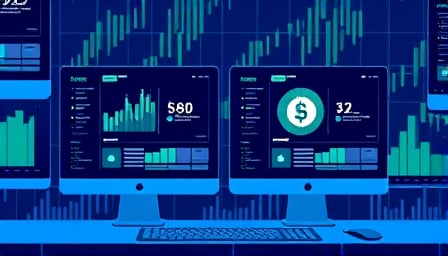The Basic Attention Token (BAT) has recently been the subject of considerable attention within the cryptocurrency market, reflecting its unique position as a digital asset designed to revolutionize the online advertising ecosystem. As of September 9, 2025, BAT’s close price stood at $0.159444, a figure that underscores the volatility and dynamic nature of the cryptocurrency market. This price point is notably above the 52-week low of $0.108016, recorded on April 6, 2025, yet still significantly below the 52-week high of $0.3642, achieved on December 6, 2024. These fluctuations highlight the challenges and opportunities inherent in the cryptocurrency space, particularly for assets like BAT that are tied to the evolving digital economy.
BAT’s market capitalization, currently valued at approximately $241.64 million, positions it as a noteworthy player within the broader cryptocurrency landscape. This valuation reflects not only the current market sentiment but also the potential investors see in BAT’s underlying technology and its application in the digital advertising sector. The token’s design aims to address longstanding issues within online advertising, such as privacy concerns, ad fraud, and the inefficient allocation of advertising budgets. By leveraging blockchain technology, BAT seeks to create a more transparent, efficient, and user-centric advertising ecosystem.
The token operates on the Ethereum blockchain, utilizing smart contracts to facilitate transactions between advertisers, publishers, and users. This mechanism ensures that users are rewarded for their attention with BAT tokens, which can then be used to support content creators or converted into other currencies. This innovative approach not only incentivizes user engagement but also promises to enhance the quality of online advertising by aligning the interests of all parties involved.
Despite its promising technology and potential to disrupt the online advertising industry, BAT faces several challenges. The cryptocurrency market’s inherent volatility poses a risk to its stability and adoption. Furthermore, the success of BAT is closely tied to the broader acceptance and integration of blockchain technology in the digital advertising sector, a process that is still in its nascent stages. Regulatory developments also present a potential hurdle, as governments worldwide grapple with how to oversee and regulate digital currencies and blockchain technology.
Looking ahead, the future of BAT will likely be influenced by several key factors. The continued development and adoption of blockchain technology in the advertising industry, regulatory clarity, and the token’s ability to maintain and grow its user base will be critical. Additionally, partnerships with major platforms and advertisers could significantly enhance BAT’s visibility and utility, driving further adoption.
In conclusion, the Basic Attention Token represents a fascinating intersection of cryptocurrency and digital advertising, offering a glimpse into the potential future of online interactions. While challenges remain, the token’s innovative approach to addressing the inefficiencies of the current advertising model positions it as a potentially transformative force in the digital economy. As the market continues to evolve, BAT’s journey will be one to watch closely, offering insights into the broader trends shaping the future of cryptocurrency and digital advertising.
